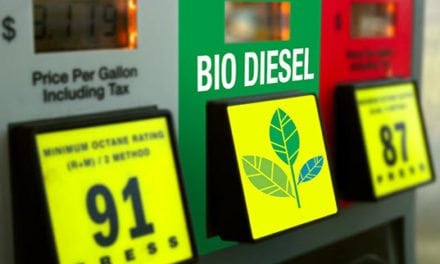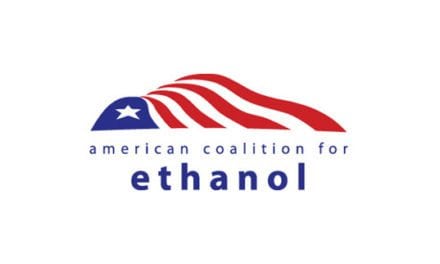Oil Rally Nearing Top?
- Oil prices have doubled
- Recovery only now underway in Texas
- Gasoline exports taking U.S. supply
- Refinery utilization rates on the rise
Alan Levine—Chairman, Powerhouse
(202) 333-5380
The Matrix
Petroleum prices have enjoyed a great bull run since November 2021. West Texas Intermediate (WTI) spot futures prices have more than doubled since then to stand at $67.98 in mid-March 2021. WTI started its rally at $33.64 in response to several events. These included bargain basement prices, tighter supply and higher RINS supporting the gas crack. There were indications of improved demand attributed in part to the advent of vaccines against COVID-19 and more recently, fuels required to support recovery from the massive winter weather events in Texas and elsewhere in the Southwest and on the Great Plains.
Petroleum products also had an impressive rally. RBOB reached November low spot futures at $0.9702. Gasoline was trading at $2.16 mid-March. The March rally reflected, in part, unusually strong demand. Texas has been tight for products because of the weather.
Another recovery factor is gasoline exports. The U.S. exported 677,000 barrels of gasoline during the week ended March 5, 2021. This compares with 493,000 daily barrels the week before. More significant is that the country’s gasoline exports at this time last year stood at 745,000 barrels per day. We are approaching pre-pandemic outflows.
ULSD spot futures reached $1.99 per gallon at mid-March. This was a $0.96 gain over the November price.
The advance in price during this time has been unremitting. Many factors, domestic and global, have joined to create an unusual situation. An attack on Saudi Arabian oil facilities failed to move prices. OPEC+ appears to hold most of the cards—controlling supply so long as U.S. shale production is constrained. (Domestic production rose to 900,000 barrels daily during the report week.)
The June gasoline crack spread ended the week of March 12 at $23.10. This crack spread started its run in November just below $12 and is supported by lower RBOB stocks. Refineries operated at 83.1% in early February, falling to 56% by February 26. A further recovery in output could put stress on gasoline cracks and RBOB price, hobbling the rally underway since November.
Supply/Demand Balances
Supply/demand data in the United States for the week ended March 5, 2021, were released by the Energy Information Administration.
Total commercial stocks of petroleum rose by 1.3 million barrels during the week ended March 5, 2021.
Commercial crude oil supplies in the U.S. increased by 13.8 million barrels from the previous report week to 498.4 million barrels.
Crude oil inventory changes by PAD District:
PADD 1: Down 0.5 million barrels to 8.4 million barrels
PADD 2: Down 1.3 million barrels to 135.1 million barrels
PADD 3: Plus 15.2 million barrels to 282.9 million barrels
PADD 4: Down 0.4 million barrels to 22.5 million barrels
PADD 5: Down 0.8 million barrels to 50.8 million barrels
Cushing, Oklahoma, inventories were up 0.5 million barrels from the previous report week to 48.8 million barrels.
Domestic crude oil production was up 900,000 barrels per day from the previous report week to 10.9 million barrels daily.
Crude oil imports averaged 5.655 million barrels per day, a daily decrease of 636,000 barrels. Exports increased 282,000 barrels daily to 2.633 million barrels per day.
Refineries used 69% of capacity, up 12% from the previous report week.
Crude oil inputs to refineries increased 2,407,000 barrels daily; there were 12.310 million barrels per day of crude oil run to facilities. Gross inputs, which include blending stocks, rose 2,395,000 barrels daily to 12.695 million barrels daily.
Total petroleum product inventories fell 12.5 million barrels from the previous report week.
Gasoline stocks fell 11.9 barrels from the previous report week; total stocks are 231.6 million barrels.
Demand for gasoline rose 578,000 barrels per day to 8.726 million barrels per day.
Total product demand decreased 88,000 barrels daily to 18.672 million barrels per day.
Distillate fuel oil stocks fell 5.5 million barrels from the previous report week; distillate stocks are at 137.5 million barrels. EIA reported national distillate demand at 4.487 million barrels per day during the report week, an increase of 699,000 barrels daily.
Propane stocks were unchanged from the previous report week; propane stocks are 41.2 million barrels. The report estimated current demand at 1.138 million barrels per day, a decrease of 348,000 barrels daily from the previous report week.
Natural Gas
According to the EIA:
The net [natural gas] withdrawals from storage totaled 52 Bcf for the week ending March 5, compared with the five-year (2016–2021) average net withdrawals of 89 Bcf and last year’s net withdrawals of 72 Bcf during the same week. Working natural gas stocks totaled 1,793 Bcf, which is 141 Bcf lower than the five-year average and 257 Bcf lower than last year at this time.
The average rate of withdrawals from storage is 19% higher than the five-year average so far in the withdrawal season (November through March). If the rate of withdrawals from storage matched the five-year average of 4.9 Bcf/d for the remainder of the withdrawal season, the total inventory would be 1,665 Bcf on March 31, which is 141 Bcf lower than the five-year average of 1,806 Bcf for that time of year.
Was this helpful? We’d like your feedback.
Please respond to [email protected]
Powerhouse Futures & Trading Disclaimer
Copyright 2021 Powerhouse Brokerage, LLC, All rights reserved










